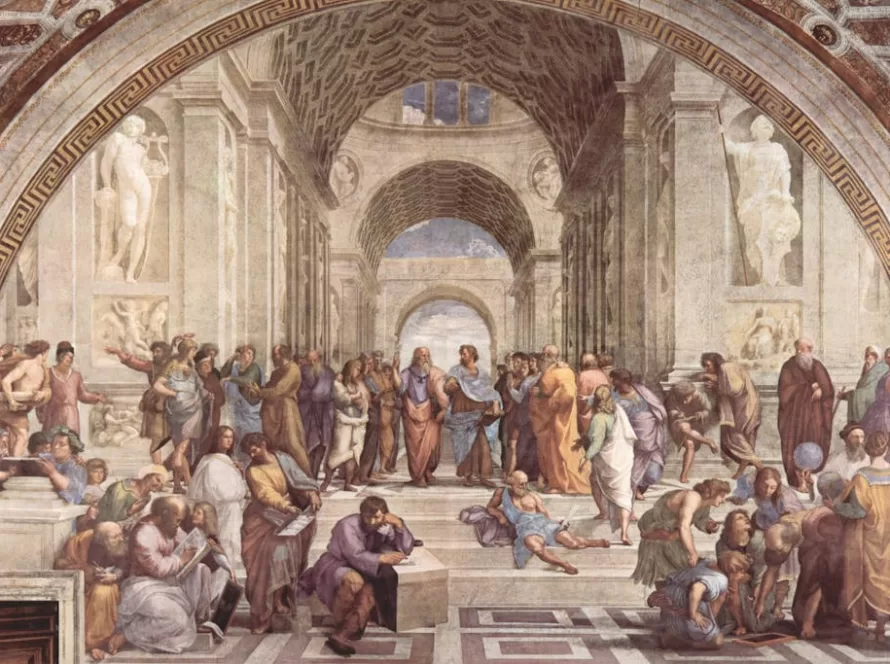The Bible is a book that has shaped history, influenced cultures, and sparked countless debates. But have you ever wondered exactly how many books are there in the Bible? In this ultimate guide, we will unravel the mysteries and provide you with the answers you seek.
The Bible is divided into two main sections: the Old Testament and the New Testament. The Old Testament contains 39 books, while the New Testament consists of 27 books. Combined together, the Bible comprises a total of 66 books. Each book has its own unique story, message, and significance.
Understanding the number of books in the Bible can give insight into its depth and breadth of content. Whether you’re a religious scholar, a curious reader, or someone seeking spiritual guidance, this guide will provide you with a comprehensive understanding of the Bible’s structure and composition.
So, join us as we embark on this exploration of the Bible and discover just how many books are there, and the stories and wisdom they hold. Get ready to unwrap the mysteries and dive into the timeless words that have impacted millions of lives throughout history.
Structure of the Bible
The Bible is a compilation of sacred texts that serves as the foundation for Christianity and Judaism. Its structure is intricate, reflecting a rich tapestry of history, culture, and theology. The Bible is generally divided into two main sections: the Old Testament and the New Testament. Each section contains various books that encompass a wide range of literary genres, including poetry, history, prophecy, and law. This division not only highlights the chronological progression of biblical history but also emphasizes the theological shifts between the two covenants.
The Old Testament, known in Hebrew as the Tanakh, forms the core of the Jewish Bible. It includes a diverse array of texts that chronicle the creation of the world, the history of the Israelites, and the prophetic messages delivered by key figures. In contrast, the New Testament focuses on the life and teachings of Jesus Christ, his apostles, and the early Christian church. This section is crucial for understanding the Christian faith and its development following the resurrection of Christ. The structural arrangement of these two testaments offers readers a framework to appreciate the continuity and discontinuity of God’s covenant with humanity.
Within each testament, the books are often grouped by categories such as historical books, wisdom literature, and prophetic writings. This organization aids in understanding the context and purpose of each text. The Bible’s structure not only serves a functional role in guiding readers through its narrative but also reflects the complexities of faith, belief, and divine revelation. This layered composition invites introspection and exploration, allowing for a deeper engagement with the content.

Old Testament Books
The Old Testament contains a total of 39 books, each contributing to the overarching narrative of God’s relationship with humanity. This section can be further divided into several categories: the Pentateuch, historical books, wisdom literature, and prophetic books. The Pentateuch, comprising the first five books—Genesis, Exodus, Leviticus, Numbers, and Deuteronomy—lays the foundation for the Jewish faith. These texts cover the creation story, the patriarchs, the Exodus from Egypt, and the giving of the Law at Mount Sinai.
Following the Pentateuch, the historical books recount the story of the Israelites as they settled in the Promised Land and established a monarchy. This section includes books like Joshua, Judges, Samuel, and Kings, which detail the successes and failures of the Israelite people. These narratives are rich in lessons about faithfulness, leadership, and the consequences of turning away from God. The historical accounts provide a backdrop against which the prophetic books can be understood, highlighting the spiritual and moral challenges faced by the nation.
The wisdom literature, including books like Proverbs, Ecclesiastes, and Job, offers insights into the human experience and the pursuit of wisdom. These texts explore themes of suffering, morality, and the nature of God, encouraging readers to seek understanding amidst life’s complexities. The prophetic books, written by figures such as Isaiah, Jeremiah, and Ezekiel, serve as divine messages calling for repentance, justice, and hope. Together, the Old Testament books create a multifaceted portrayal of God’s covenant with Israel and His unwavering commitment to humanity.
New Testament Books
The New Testament is comprised of 27 books that center on the life, death, and resurrection of Jesus Christ, along with the early church’s development. These texts can be categorized into the Gospels, historical accounts, letters (or epistles), and apocalyptic literature. The Gospels—Matthew, Mark, Luke, and John—provide distinct perspectives on Jesus’ ministry, teachings, and significance. Each Gospel writer presents a unique narrative, highlighting different aspects of Christ’s character and mission, ultimately culminating in the message of salvation.
Following the Gospels, the Book of Acts serves as a historical account of the early church and the spread of Christianity after Christ’s ascension. This book, attributed to Luke, details the apostles’ missionary journeys, the establishment of churches, and the challenges faced by early Christians. It is a vital resource for understanding the growth of the faith and the dynamics of the early Christian community.
The epistles, primarily written by the Apostle Paul, address various churches and individuals, offering theological insights, ethical guidance, and pastoral encouragement. Letters such as Romans, Corinthians, and Ephesians delve into profound topics like grace, faith, and the nature of the church. The New Testament concludes with the Book of Revelation, an apocalyptic text that employs vivid imagery to convey messages of hope and warning regarding the end times. Collectively, the New Testament books invite readers to explore the transformative impact of Jesus’ teachings and the foundation of Christian belief.

Apocryphal Books
The term “apocryphal” refers to a set of texts that are not included in the canonical Bible, though they hold historical and theological significance. These books vary in acceptance among different Christian traditions, with some incorporating certain apocryphal texts into their biblical canon while others categorically reject them. For instance, the Catholic Church includes several apocryphal books, known as the Deuterocanonical books, within the Old Testament, such as Tobit, Judith, and the Wisdom of Solomon.
The Protestant tradition, on the other hand, generally excludes these texts, emphasizing the 39 books of the Old Testament and the 27 of the New Testament as the authoritative scripture. This divergence stems from historical debates regarding the authenticity, authorship, and theological content of these apocryphal writings. Despite their exclusion from many canons, apocryphal books provide valuable insights into the beliefs, practices, and historical contexts of ancient Jewish and early Christian communities.
Additionally, there are other writings, such as the Gospel of Thomas and the Gospel of Mary, which are considered non-canonical but shed light on the diversity of early Christian thought. These texts often explore themes of spirituality, the nature of God, and the role of women in faith. While not regarded as scripture by mainstream Christianity, the apocryphal writings contribute to a more comprehensive understanding of the religious landscape during the biblical period and the formation of canonical texts.
Canonical Books
The term “canonical” refers to the books that are recognized as authoritative scripture within a religious tradition. In Christianity, the canon of the Bible is divided into the Old Testament and New Testament, comprising a total of 66 books. The process of determining which texts became canonical was complex and involved various factors, including theological consistency, apostolic authority, and widespread acceptance among early Christian communities. This process was not uniform and varied across different regions and traditions.
In the early centuries of Christianity, church leaders and councils convened to discuss and validate texts that were being circulated among believers. For example, the Council of Carthage in 397 AD affirmed the canon of the New Testament as it is known today. Each book was scrutinized for its doctrinal integrity and its alignment with the teachings of Jesus and the apostles. This careful selection process resulted in a canon that many Christians regard as divinely inspired and authoritative.
The significance of canonical books lies not only in their theological content but also in their role within worship, moral instruction, and community identity. They serve as a foundation for Christian belief, guiding adherents in their understanding of God, salvation, and ethical living. The recognition and preservation of these texts through centuries of change and upheaval underscore their enduring impact and relevance in the lives of millions.
Controversies and Debates
Throughout history, the Bible has been at the center of numerous controversies and debates concerning its interpretation, authorship, and the criteria for inclusion in the canon. One of the most prominent discussions revolves around the authority of scripture and how it should be understood in relation to tradition, reason, and experience. Different denominations and theological perspectives offer varying interpretations of key biblical passages, leading to significant theological divides, such as between Catholics and Protestants.
Another area of contention is the inclusion of certain books within the canon. The Apocrypha, for instance, remains a subject of debate. While the Catholic Church recognizes several apocryphal texts as part of the Old Testament, many Protestant denominations do not. This divergence raises questions about the nature of divine revelation and the criteria used to determine which texts are considered authoritative. The historical context and the intent behind various writings also contribute to ongoing discussions about the nature of scripture.
The interpretation of biblical texts has also evolved over time, influenced by cultural, historical, and social factors. Modern scholarship often employs critical methods, such as textual criticism and historical-critical analysis, to better understand the context in which biblical texts were written. These approaches can sometimes lead to differing conclusions about the meaning of certain passages, creating further debates among theologians, scholars, and lay readers. As society changes, so too do the discussions surrounding the Bible, reflecting its lasting significance in a diverse and dynamic world.
Translations and Variations
The Bible has been translated into thousands of languages, making it one of the most widely disseminated books in history. Each translation reflects the linguistic, cultural, and theological contexts of the time in which it was produced. Early translations, such as the Septuagint (a Greek translation of the Hebrew Scriptures) and the Vulgate (Latin translation by Jerome), played crucial roles in shaping how the scriptures were understood and accessed by different communities. Each translation presents unique challenges and interpretations, raising questions about fidelity to the original texts and the intended meaning.
Modern translations vary in their approach to rendering the original languages—Hebrew, Aramaic, and Greek—into contemporary vernaculars. Some versions prioritize a word-for-word translation, aiming for literal accuracy, while others focus on thought-for-thought translations that seek to convey the intended message in a more accessible manner. Prominent translations include the King James Version (KJV), New International Version (NIV), and English Standard Version (ESV), among many others. Each of these translations has its own audience and purpose, contributing to the rich landscape of biblical literature.
The existence of multiple translations can lead to confusion, but it also invites deeper exploration and understanding of the scriptures. Readers are encouraged to engage with different versions, comparing and contrasting translations to grasp the nuances of language and meaning. This process not only enhances biblical literacy but also fosters a greater appreciation for the diverse ways in which the Bible has been understood and interpreted throughout history. The accessibility of various translations ensures that the timeless messages contained within the Bible continue to resonate with people from all walks of life.
Understanding the Different Versions and Editions
In addition to the multitude of translations, the Bible is available in various editions, each tailored to specific audiences and purposes. Study Bibles, for instance, provide extensive notes, maps, and commentaries that assist readers in understanding the historical and cultural context of the texts. These editions often include cross-references to other biblical passages, helping readers to see connections within the scripture. The study Bible format has become increasingly popular, as it allows for a deeper engagement with the text.
Parallel Bibles present multiple translations side by side, enabling readers to compare different renderings of the same passage. This format enhances critical reading and offers insights into how translation choices can impact interpretation. Additionally, devotional editions focus on applying biblical principles to daily life, often including reflections, prayers, and prompts for personal growth. These various editions cater to the diverse needs and preferences of readers, ensuring that the Bible remains relevant and accessible.
Moreover, digital formats have revolutionized how individuals access and engage with scripture. Bible apps and online platforms provide instant access to multiple translations, audio versions, and interactive study tools. This technological advancement allows users to explore the Bible in ways that were once inconceivable, fostering a more dynamic and personalized approach to scripture. As readers navigate through different versions and editions, they are encouraged to consider their own interpretations and applications of the biblical text, enriching their spiritual journey.
The Significance of the Bible
The Bible is not merely a collection of ancient texts; it is a living document that has shaped cultures, influenced societies, and inspired individuals for centuries. Understanding how many books are in the Bible and their diverse contents offers a glimpse into its profound impact on human history and spirituality. Beyond its numerical composition, the Bible encapsulates timeless truths, moral teachings, and narratives that continue to resonate with people across generations and backgrounds.
The significance of the Bible lies in its ability to speak to the human experience. Whether grappling with questions of faith, seeking guidance in times of turmoil, or reflecting on life’s purpose, individuals turn to the scriptures for wisdom and insight. The stories of triumph, despair, love, and redemption found within its pages provide hope and encouragement, reminding readers of the enduring nature of God’s promises.
In a world marked by complexity and uncertainty, the Bible remains a source of comfort and inspiration. Its teachings challenge individuals to pursue justice, extend grace, and foster compassion in their interactions with others. By engaging with the Bible’s rich tapestry of narratives and wisdom, readers can cultivate a deeper understanding of their faith and its implications for their lives. Ultimately, the Bible serves as a bridge connecting the past, present, and future, inviting all to explore its mysteries and embrace the transformative power of its message.




